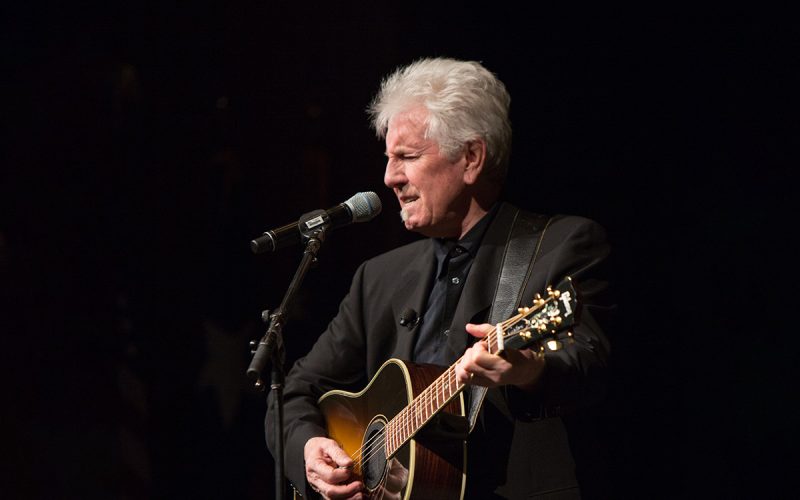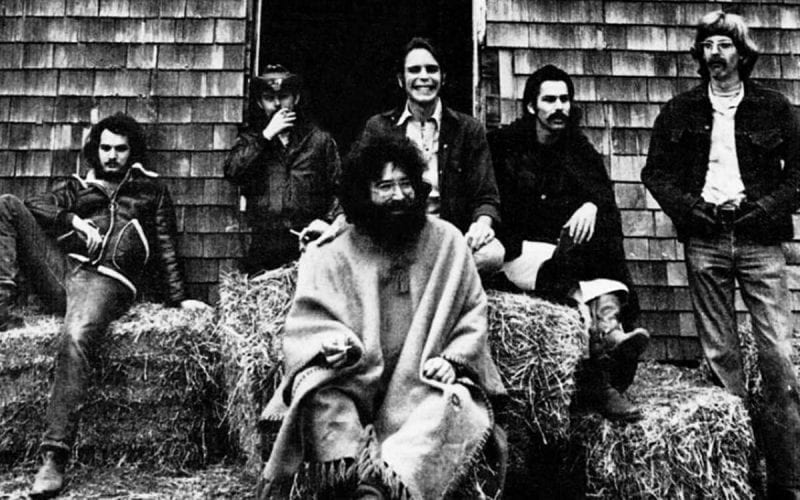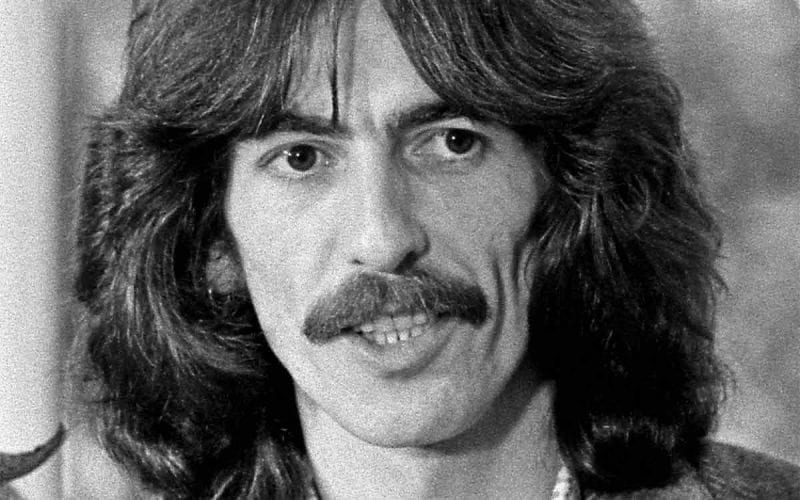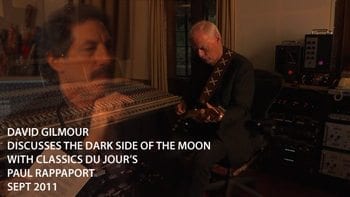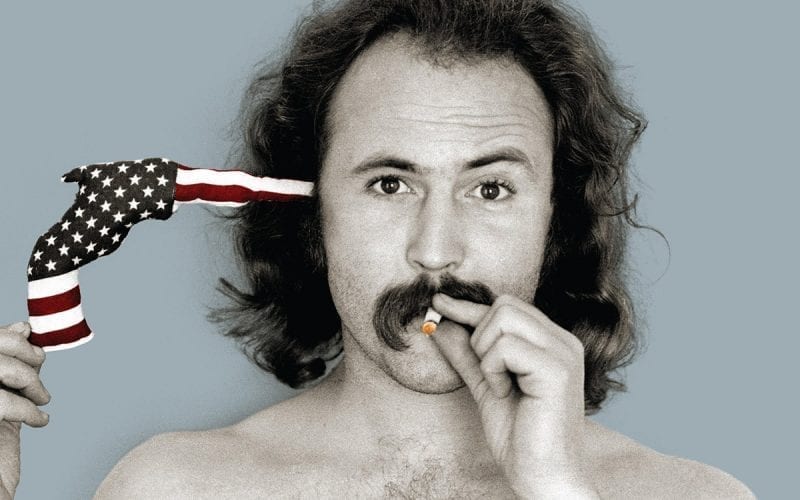
Usually “Must See” appears at the beginning of my description of music films or documentaries I write about. I have to admit — I can’t say that about Remember My Name. Not that it isn’t interesting, or that you won’t learn some cool things about David Crosby by watching it. But overall, it doesn’t possess the gravitas of Echo In The Canyon or other music films I’ve seen.
This documentary pulls no punches about the life of David Crosby. And it turns out, David Crosby is a pretty sad figure. Those of us who grew up listening to him and the different bands he was in are somewhat aware of his trials and tribulations, but this movie tells his story in detail. And there is no happy ending here. Except that he’s not drug crazed any more and has calmed down, sharing a nice life with his wife Jan on a large plot of land when he’s not touring.
David is not in the best of health. He has eight stents in his heart, he’s had a liver transplant, and he’s diabetic. In fact, he admits that he has no idea why he’s still alive. But we do get a smile when we see his love for life and his effort to make every day count. “Time is the final currency… how do you choose to spend it?”
I always find it fascinating to learn how certain life forces move people to choose their vocations. The actor Patrick Stewart (Captain Jean-Luc Picard in Star Trek) has told the story that his home life as a child was so volatile and so horrible that he loved to act as a means of escape. He would pretend that any play he was in was his real life, and that gave him much needed relief. Acting for Stewart became a matter of survival not just ‘I want to be a famous celebrity.’
Although David Crosby’s mother was a loving person, his father was kind of a crusty stick in the mud and never told David he loved him. Ever. He was also not a popular child growing up. “I was the fat kid,” he claims. Those two circumstances left him starving for attention and craving approval. Becoming an entertainer was a natural antidote.
Crosby was turned on to music at an early age and fell in love with The Everly Brothers because of the harmonies. That found him naturally wanting to be in bands like The Byrds and Crosby, Stills & Nash.
He made it big with The Byrds at a very young age and admits, like many young successful artists, that he didn’t know to handle the fame and money. He says, “I was difficult to work with — big ego, no brains — goofy.”
But with Crosby there were darker forces brewing.
He was fired from The Byrds for being too difficult to work with. But rather than look for another music opportunity right away, he decided he needed some space. David bought his now-legendary sailboat with $25,000 he borrowed from Peter Tork, who was having commercial success at the time as the bass player of The Monkees.
I love David’s explanation of what sailing feels like and how it calms him in a way like no other. He says that when you’re on land you are receiving lots of sensory information: sights and sounds of everyday life. Not to mention any worries or anxieties you may have, all happening at the same time. But when you’re on the water all of that disappears. There is hardly any information you need to process — just the sky and the water. Your whole system gets flushed out — you become serene.
This was a light-bulb moment for me. I have been a surfer my whole life and sometimes struggle to explain to people how wonderful it feels and why. I’ve always figured the calmness and tranquility came from being surrounded by all the negative ions being emitted by such a large body of water. Like how you feel after you’ve taken a shower, but on a larger scale. Of course there is the bobbing up and down that you do while waiting for a wave, not to mention the swooping motion and dance you do with the wave while riding it. But I never thought about the idea of your mind going through sensory overload on land and the complete opposite when you are sitting out there on a surfboard. Indeed, it’s the only place I am where everyday thoughts and worries completely disappear — where I become totally tranquil, in a Zen state of mind.
After chilling out living on his sailboat for a while, Crosby decided to get back in the game and moved to Laurel Canyon. In fact, he claims, he was the first music artist to do so.
For those of you who may not have read my review of Echo In The Canyon, many artists gravitated to that spot because they felt like they were living in a forest or wilderness, while actually being right in the heart of Los Angeles. In the Canyon, an artist could create while surrounded by hills, trees, and beautiful wild flowers. And then you could go to work in a club or a recording studio located right at the base of the Canyon on the Sunset Strip.
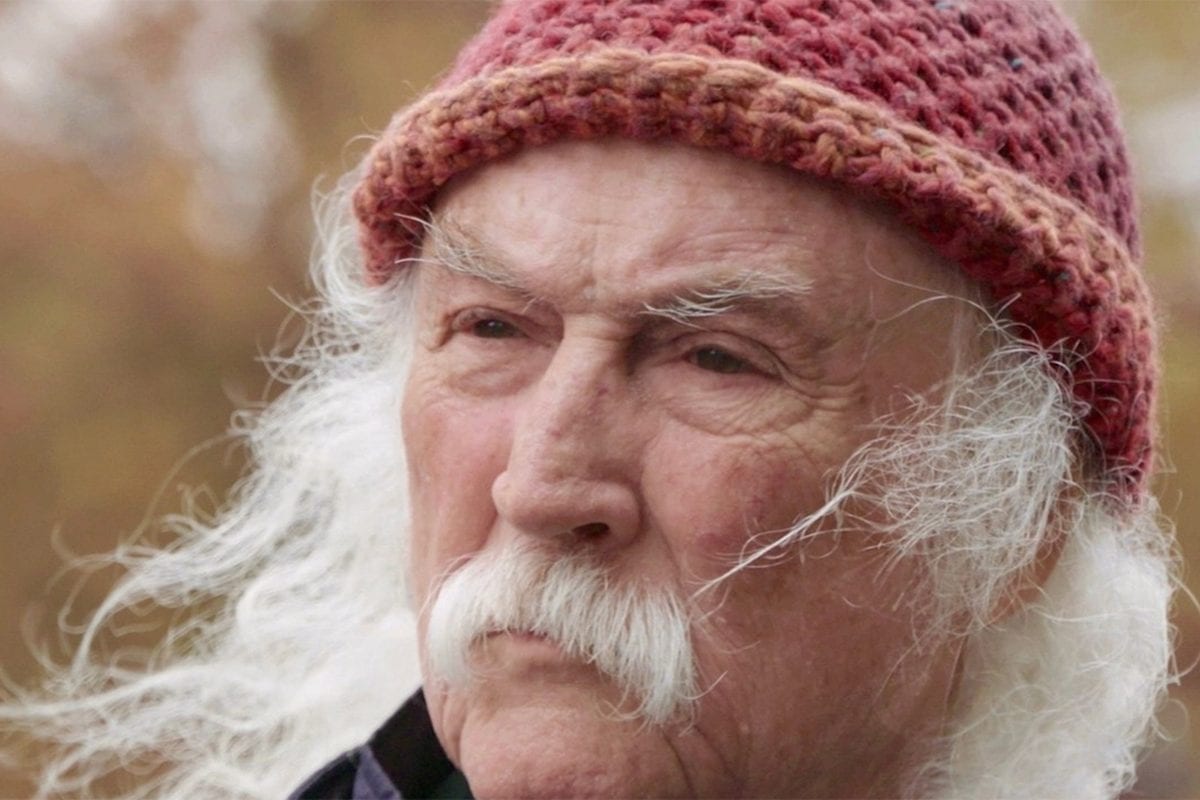
David talks about all the other artists who lived there including Mama Cass Elliot, Joni Mitchell, Graham Nash, Roger McGuinn, Brian Wilson, and more. But he also lets us know that this is the place where things began to really go south for him. Too much indulgence got him addicted to cocaine and heroin. And because of his personality, he admits to being very hard on women and very selfish in his love affairs — moreover, just selfish in general. He even admits to getting girls addicted to coke and harder stuff and taking them down a very bad and perverse road with him. He goes on to tell us in no uncertain terms that he has basically been a very bad person for a lot of his life. So horrible, at times, that none of his former music mates will even talk to him now.
There is a scene in the film where Graham Nash, who is universally known as one of the sweetest men on earth, is screaming so loud at Crosby you think he’s going to have a heart attack. Indeed, some years ago when I was working with Roger McGuinn and asked if there might ever be a Byrd’s reunion he said, “I can’t work with Crosby, he’s the Devil.”
“Oh,” I replied, “a bad guy?”
“Not a bad guy,” said Mcguinn, “not like the devil… he IS THE DEVIL!”
Roger’s eyes were wild. The way he made the point, my knees went wobbly.
On a lighter note, I am happy to report that the two recently exchanged some communication intimating there may be forgiveness in the air. I guess at a certain age you mellow.
Like watching most of these movies you learn some very cool, inside info. Crosby produced the first Joni Mitchell album and they became an item. He said that even though his personality was fraught with imperfections, that being in a relationship with her was like being thrown into a cement mixer; he remembers laughing and crying all within the same half-hour.
Crosby also reveals that Joni wanted to be Judy Collins, which is really interesting. I’ve seen this over and over again in the music business and it never ceases to amaze me. As great as an artist is, they covet another’s standing; Paul Simon wanted to be Bob Dylan, Eric Clapton saw Jimi Hendrix perform and became very distraught because he knew as great as he was, he could never be that, and Billy Joel used to look a bit forlorn when he would describe Bruce (Springsteen) as “the best“. I remember on multiple occasions telling Billy that he was the greatest Billy Joel we had, and that was pretty damn great. I told him comparing himself to Bruce was like apples and oranges and that his (Billy’s) audience was screaming just as loud for him as Bruce’s did for Bruce.
But artists are human beings in the end, with real feelings of their own. And Joni Mitchell was not the only one who fell under Judy Collin’s spell. Stephen Stills saw Collins perform and was so taken he wrote the Crosby, Stills, & Nash song “Suite: Judy Blue Eyes”.
Crosby talks a bit about Woodstock and how cool it was to see that many people being nice to each other — even a group of hippies helping a state trooper get his car out of the mud. “We thought we could change the world,” he says. And many of us who are of that age and who were a part of that scene thought we really could.
He tells the story about meeting Graham Nash and knowing, within forty seconds of them singing together, that there was something so organically magical about the blend of their voices that something big was going to happen. That big thing, of course, was Crosby, Stills, and Nash.
Then he tells the story of standing outside the band’s Canyon house one day (the house about which Graham Nash penned the song “Our House”) when Neil Young drove by, saw him, backed up his car, sat on the trunk and played David three songs. Next thing you know it was Crosby, Stills, Nash, & Young. Some things are just meant to happen.
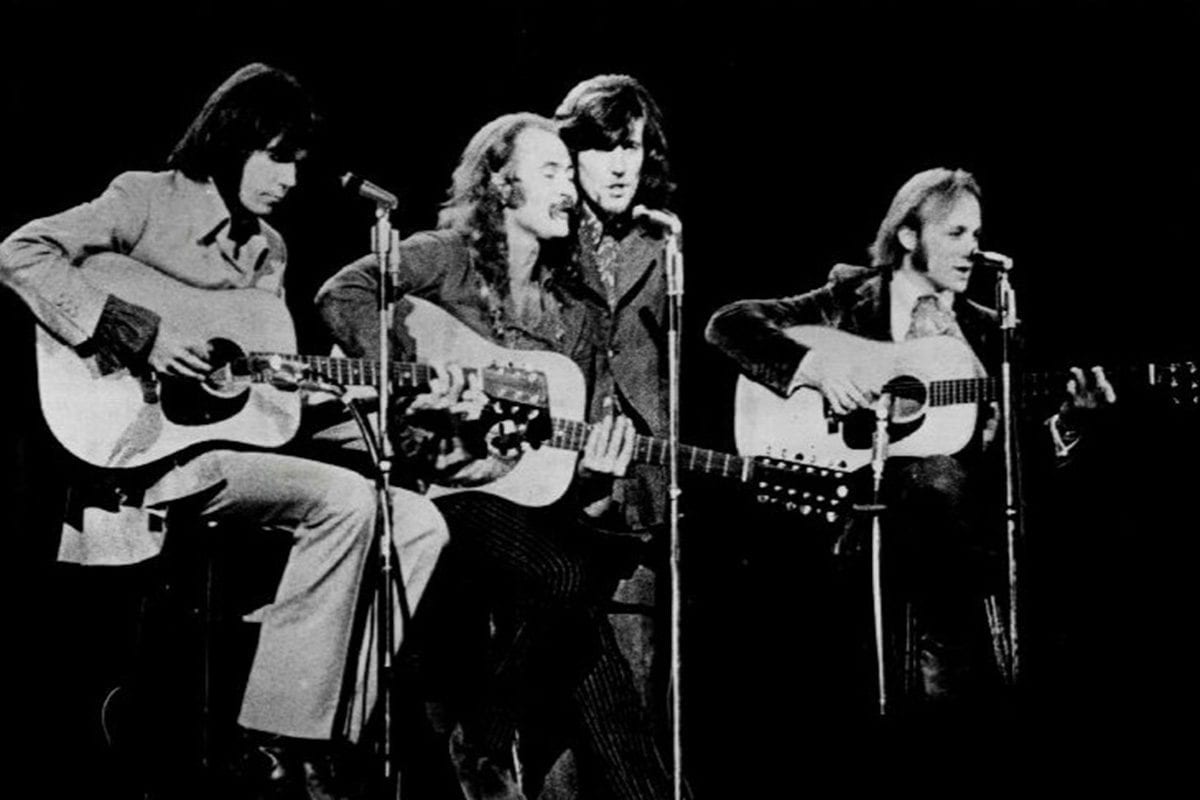
David claims that CSN was the first American super-group. He is proud that they didn’t need big stage production like lasers or smoke bombs, “…just the songs and the music.” He talks about the song “Ohio” and how Neil Young was so moved by the tragic shootings at Kent State University that he sat right down in front of David and wrote it on the spot.
We also learn about his legendary debut solo album, If I Could Only Remember My Name, part of the title artistically used for the name of this film. It’s great to hear how in a young music business artists just showed up as friends and lent a hand making an album. People like Jerry Garcia, Carlos Santana, Joni Mitchell — whoever showed up added their own incredible talents to the project. There was no overall plan just synergistic musical greatness created during every recording session — “…whoever showed up, that’s what the record was about that day.” Through this organic journey, the record wound up becoming a natural masterpiece.
As an aside, for any Deadheads out there, Crosby considers Jerry Garcia to be the purist musician he ever met.
We get to experience some of Crosby’s highs, like his time spent with The Byrds (meeting The Beatles), Crosby, Stills, Nash, & Young, and performing with other musicians. But then we are plunged into the depths of the hellish part of his life, where he gets so messed up on drugs and his personality turns so caustic that he is seen as solely responsible for the break up of CSN&Y. Following that, he is arrested for drugs and gun charges, runs from the law, finally turns himself in to the FBI, and goes to prison. He even spends time in solitary confinement — it’s all very heavy.
Throughout the film, Crosby seems to be apologizing to everyone he hurt. For all his faults, you can see he has the ability to truly love someone. He talks about a true love in his life, Christine Hinton, who died in a car accident when they were both very young. You can see in his eyes that he truly loved this girl, and never fully recovered from her death. Yet, even though he loved her so much he admits he could have been much more attentive in the relationship — “…sorry, I could have loved you better.”
The film almost seems like a giant mea culpa, an admission to being a very horrible human being for much of his life. And perhaps through this movie trying to shed his old skin, to somehow cleanse himself before he dies. It may be the reason – or one of the reasons – he made the film. Turns out he has refused four previous filmmakers to make a biopic, but at age 77 Crosby was finally ready to talk.
I met him once when he was a special guest on one of the Live By Request music television specials I produced. He was especially nice and we had a great talk about The Byrds, about life in general, and how chancy and random it can sometimes be. He told me that he had been lucky enough to receive a liver transplant and that his Byrds bandmate Michael Clarke hadn’t, and he had died at the young age of 47 from liver failure. Between that and the stents in his heart, even at that time, he told me he had no idea why he was still alive.
In Remember My Name, we see him repeat that fact over and over again. As if it’s hard for him to come to grips with how someone who’s left such an amount of human destruction in his wake is somehow blessed to remain living. But we also see his relationship with his current wife, Jan and it appears that she has helped bring him some kind of peace. “Jan taught me how to love myself and to love, period,” he says.
I guess, God giveth and God taketh away. It’s not the first time we’ve seen beautiful art created but by someone who’s led a rough life, and I applaud Crosby for bearing his soul in such an honest way.
But in the end, it was hard watching someone who knew he could have done so much better but chose not to. And it appeared that no amount of apologizing in this film or in-person to all the people he hurt was going to give him the peace of mind he is seeking so desperately.
Having said all that, we can still enjoy all the great music David Crosby has given us over the years. As Bruce Springsteen once said, “Trust the art, not the artist.”
David Crosby’s art will ring true forever, so at least he can be thankful for that.
Until next time,
Rap~
© Paul Rappaport 2019

